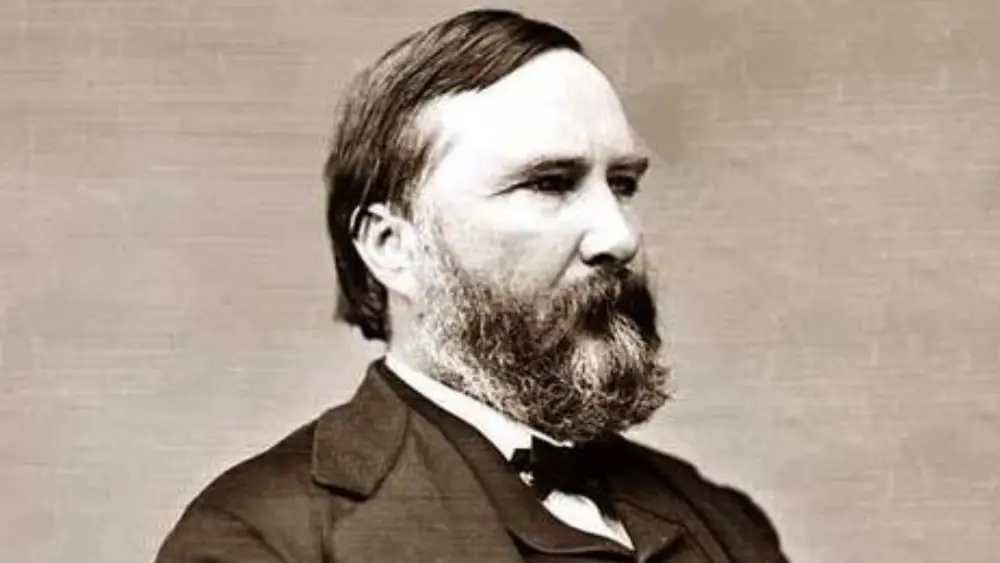James Longstreet, born on January 8, 1821, in Edgefield District, South Carolina, was one of the most prominent Confederate generals during the American Civil War. Revered by some as a tactical genius and criticized by others for his post-war political choices, Longstreet’s legacy remains one of the most complex and debated among Civil War historians. Nicknamed the “Old War Horse” for his steady and reliable service throughout the conflict, Longstreet was known for his calm demeanor, strategic brilliance, and unflinching loyalty to the Southern cause.
Early Life and Military Education
James Longstreet’s early life was firmly rooted in the culture and traditions of the antebellum South. Born into a family with military ties—his father was a lieutenant colonel in the South Carolina militia—Longstreet was steeped in Southern values from an early age. Growing up in Edgefield District, an area known for producing many military leaders and politicians, Longstreet developed a strong sense of regional pride and loyalty that would profoundly influence his future decisions.
In 1837, at the age of sixteen, Longstreet received an appointment to the prestigious United States Military Academy at West Point. His years at West Point were formative, providing him not only with military training but also instilling in him the discipline, leadership skills, and strategic thinking that would later define his military career. He graduated in 1842, ranking 54th out of 56 in a class of 56 graduates, an unremarkable academic standing that belied the future success he would achieve on the battlefield.
Despite this, Longstreet proved himself to be an adept and courageous officer in the field. West Point during this era was the primary source of military leaders for both the Union and the Confederacy, and it was here that Longstreet built relationships with many peers who would later become his comrades or rivals in the Civil War.
Mexican-American War and the Interwar Period
Longstreet’s first major military experience came during the Mexican-American War (1846-1848). As a young lieutenant, he served with distinction under General Winfield Scott in campaigns that involved brutal battles and difficult terrain. Longstreet was praised for his composure under fire and his ability to lead troops effectively, traits that earned him recognition and promotions.
The Mexican-American War was crucial in shaping the future leaders of the American Civil War, as it gave many officers, both Northern and Southern, invaluable combat experience. Longstreet’s service in Mexico demonstrated his resilience and tactical skill, and he gained the respect of both his superiors and subordinates.
After the war, Longstreet continued his military career, serving in frontier posts across Texas and New Mexico. During this interwar period, he was involved in duties ranging from protecting settlers to managing conflicts with Native American groups. These years, though less glamorous than active warfare, were important for sharpening his leadership abilities and expanding his understanding of logistics, terrain, and troop management.
The American Civil War: Choosing Sides
When the Civil War erupted in 1861, James Longstreet found himself faced with a momentous decision: to side with his home state of Georgia and the Confederacy or remain loyal to the United States. Opting to follow his allegiance to his state, he embarked on a path that would see him rise to prominence as a military leader. His decision proved pivotal, as Longstreet quickly earned recognition for his exceptional military acumen and leadership qualities. These formative experiences laid the foundation for Longstreet’s crucial role in the impending American Civil War, where his leadership and combat skills would leave a lasting impact on history.
James Longstreet’s contributions to the Confederate cause were significant and multifaceted. He demonstrated his tactical prowess and bravery in key engagements such as the First Battle of Bull Run, where he led troops with skill and determination. Longstreet’s strategic acumen came to the fore during the Peninsula Campaign, where he played a crucial role in General Robert E. Lee’s efforts to defend Virginia. He played an instrumental role in battles like Second Bull Run and Antietam, where he orchestrated the Confederate forces and contributed to their successes. James Longstreet’s dedication to the Southern cause and his remarkable military abilities made him a central figure in the American Civil War, leaving an enduring legacy that continues to be studied and remembered to this day.
James Longstreet: Second Battle of Bull Run and Antietam
During the Second Battle of Bull Run, James Longstreet emerged as a key figure in securing a Confederate victory. His leadership and strategic acumen were instrumental in orchestrating the Confederate forces to achieve success on the battlefield. Longstreet’s ability to coordinate and direct his troops played a pivotal role in this crucial Confederate triumph, underlining his significance as a military leader during the American Civil War.
Similarly, at the Battle of Antietam, Longstreet’s troops found themselves in a critical defensive position. They withstood relentless and repeated Union attacks, demonstrating their resilience and the strength of Longstreet’s leadership. His ability to hold this crucial line during the battle played a significant part in the Confederate Army’s overall efforts in that engagement. Longstreet’s leadership and tactical skill during these two battles further solidified his reputation as a formidable military commander in the annals of the Civil War.
Gettysburg: The Controversial Turning Point
Perhaps no event in Longstreet’s military career is more scrutinized than the Battle of Gettysburg in July 1863. This three-day battle was a turning point in the Civil War and remains one of its most studied and debated engagements.
Longstreet’s role at Gettysburg was complex and marked by deep disagreements with General Lee. Preferring a more defensive strategy, Longstreet advised Lee against launching a massive frontal assault against well-entrenched Union positions on the third day, a plan that became known as Pickett’s Charge. Longstreet favored maneuver warfare and advocated for flanking or defensive tactics to minimize Confederate losses.
However, Lee, convinced of the necessity of a bold offensive, overruled Longstreet’s objections. The resulting Pickett’s Charge was a disastrous failure, resulting in heavy Confederate casualties and a turning point in the Union’s favor.
The aftermath of Gettysburg left Longstreet a controversial figure. Some blamed him for the defeat, accusing him of either slow execution or even tacit opposition to Lee’s commands. Others defended him, arguing that he had been a voice of reason and had been right to oppose the charge. This controversy would haunt Longstreet throughout his life, coloring his legacy in both Southern and national memory.
James Longstreet: Post-War Life and Controversy
In the tumultuous aftermath of the Civil War, James Longstreet found himself embroiled in a complex struggle, one far removed from the battlefield but equally significant in shaping his legacy. His post-war life was marked by a profound commitment to reconciliation and his evolving stance on civil rights, which led to his emergence as a prominent Republican figure. While Longstreet had once been a respected Confederate general, his embrace of Reconstruction efforts and his alliances with former Union generals, most notably Ulysses S. Grant, would ultimately estrange him from many in the South and Confederate Veterans.
Longstreet’s journey in the post-war era was a testament to the complexities of personal and political transformation. He navigated a path that challenged traditional Southern sentiments, opting for cooperation over confrontation in an attempt to heal the nation’s deep wounds. However, this choice came at a cost, as many Southerners viewed him as a traitor to the Lost Cause. His support for civil rights and efforts to promote unity often placed him in direct opposition to those who clung to the ideals of the Confederacy. Nonetheless, Longstreet’s post-war life and the controversies it entailed stand as a compelling chapter in American history, shedding light on the intricate web of loyalties and values that shaped the nation during this turbulent period.

Legacy and Controversy
The legacy of James Longstreet is a multifaceted one, defined by a duality that continues to spark debates and discussions in the realm of Civil War history. On one hand, Longstreet is celebrated for his undeniable military brilliance, earning his place as one of the Confederacy’s most capable generals. His strategic acumen and contributions to pivotal battles like Gettysburg underscore his significance in the annals of American military history. Many perceived his post-war political stances as betrayals of the Southern cause, casting a shadow over his legacy. His decision to align with the Republican Party and support Reconstruction efforts placed him at odds with the prevailing sentiments of the South, transforming him into a polarizing figure whose actions continue to evoke both praise and condemnation.
In the enduring discourse surrounding James Longstreet, the tension between his military prowess and his post-war choices remains a point of contention. For some, his tactical genius eclipses any misgivings about his political affiliations, while others view his alignment with the enemy and support for civil rights as inexcusable breaches of Southern loyalty. Ultimately, Longstreet’s legacy serves as a poignant reminder of the complex and often contradictory nature of history, where heroes and villains can coexist within the same individual, leaving future generations to grapple with the nuances of his enduring controversy.








